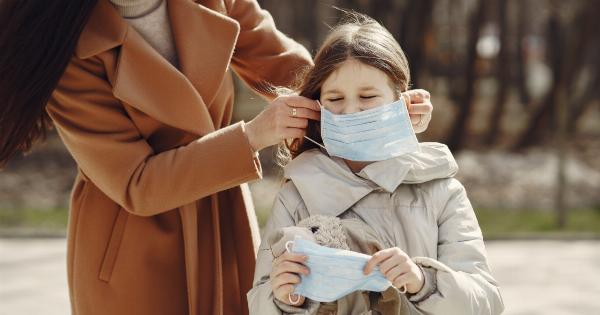Exposing children to sunlight is a common activity during the summer months.
After all, who could resist the allure of warm weather and days spent playing outside? However, it’s important for parents and caregivers to be aware of the potential risks associated with excessive sun exposure for young children. In this article, we will delve into the reasons why you should limit children’s exposure to sunlight and explore various ways to protect them from its harmful effects.
The Dangers of Sunburn
One of the most immediate and visible consequences of prolonged sun exposure is sunburn. Children have delicate and sensitive skin, which makes them more susceptible to sunburns than adults.
Even a single severe sunburn during childhood can significantly increase the risk of skin cancer later in life.
In addition to the discomfort caused by sunburn, it can also lead to dehydration and fatigue. The pain and physical consequences of sunburn can spoil a child’s outdoor adventures and disrupt their daily routine.
Skin Damage and Premature Aging
Excessive sun exposure has a cumulative effect on the skin, leading to long-term damage and premature aging. The harmful ultraviolet (UV) radiation from the sun can penetrate the skin and damage the DNA in skin cells.
Over time, this can cause changes in skin texture, pigmentation, and elasticity.
When children are repeatedly exposed to the sun without protection, it accelerates the aging process of their skin. Wrinkles, fine lines, and age spots may start appearing earlier than they would in individuals who have limited their sun exposure.
Risk of Skin Cancer
Protecting children from the sun is crucial for reducing their risk of developing skin cancer in adulthood. According to the Skin Cancer Foundation, just five sunburns in childhood can double the chances of developing melanoma later in life.
Melanoma is one of the deadliest forms of skin cancer, and its incidence has been increasing worldwide.
Melanoma risk is strongly associated with intense, intermittent sun exposure that often occurs during childhood and adolescence, such as sunburns experienced during family vacations or outdoor playdates.
Importance of Vitamin D
Vitamin D is essential for the healthy development of bones and teeth, and sunlight is a primary source of this essential vitamin.
However, it is possible to strike a balance between adequate vitamin D intake and protecting children from excessive sun exposure.
During the summer months, children can receive sufficient vitamin D by spending a limited amount of time in the sun, typically 10-15 minutes early in the day or late in the afternoon, when the sun’s rays are less intense.
This brief sun exposure usually provides enough vitamin D without significantly increasing the risk of sunburn or skin damage.
Practical Tips for Sun Protection
Now that we understand the risks associated with excessive sun exposure, let’s explore some practical tips to protect children from the harmful effects of the sun:.
1. Seek Shade
Encourage children to play in shaded areas, such as under trees or using beach umbrellas. This helps reduce their overall sun exposure, especially during the peak hours of intense sunlight.
2. Cover Up
Dress children in lightweight, tightly woven clothing that covers their skin. A wide-brimmed hat and sunglasses also provide additional protection for their face, neck, and eyes.
3. Apply Sunscreen
Choose a broad-spectrum sunscreen with a high sun protection factor (SPF) of 30 or above specifically formulated for children.
Apply sunscreen liberally to all exposed areas of skin at least 15 minutes before going outside, and reapply every two hours, or more frequently if swimming or sweating.
4. Time Outdoor Activities Wisely
Plan outdoor activities for early morning or late afternoon when the sun’s rays are less intense. This reduces the risk of sunburn and other sun-related skin damage.
5. Educate and Lead by Example
Teach children about the importance of sun protection and the potential risks of excessive sun exposure. Encourage them to adopt sun-safe habits from an early age. Be a role model by consistently following sun protection practices yourself.
6. Use Protective Gear
If children are involved in outdoor sports or activities that require prolonged sun exposure, make sure they wear appropriate protective gear such as rash guards, hats with neck flaps, and sunglasses.
7. Stay Hydrated
Remind children to drink plenty of water or other hydrating fluids while playing outdoors, especially on hot and sunny days. Staying hydrated helps prevent dehydration and reduces the risk of heat-related illnesses.
Conclusion
As parents and caregivers, it’s our responsibility to ensure the well-being and safety of our children.
By limiting their exposure to sunlight and taking appropriate sun protection measures, we can minimize their risk of sunburn, skin damage, premature aging, and even skin cancer. Remember, a few simple precautions can go a long way in safeguarding their health while still allowing them to enjoy outdoor activities. Prioritize sun protection and make it an integral part of your family’s routine all year round.






























